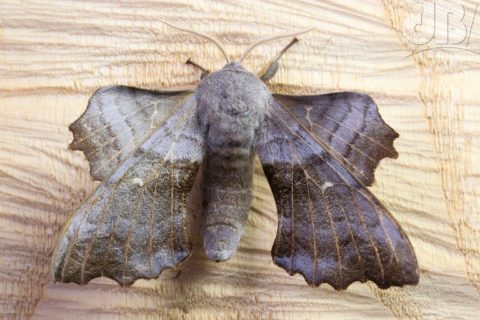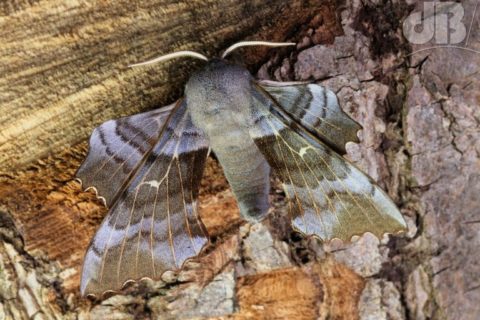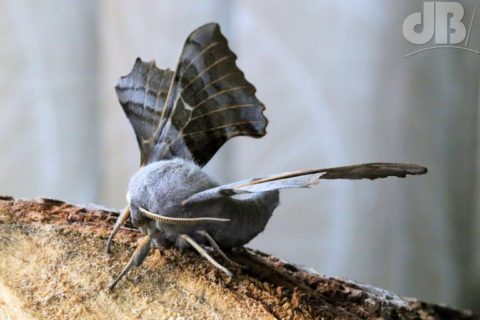UPDATE: 25 Jun 2019 – Another Poplar turned up overnight along with two Privets, an Eyed, six Elephants, and a Small Elephant! And 150 other miscellaneous specimens.

My first taste of mothing proper was in a friend’s garden, where I turned up at about 8am the night after he’d “lit up” his 40W actinic, homemade, collapsable Robinson trap. I mentioned it on the blog at the time, you may recall – The Nouveau Mottephile. Regular readers will have noticed I’ve blogged about moths quite a lot since that fateful July morning. Anyway, on that morning I was startled by to be introduced to the diversity of the Lepidoptera, there were a few dozen moths in my friend’s trap, almost all of which I had never seen before. I only had a phone with me so, the photos I got were of poor quality. One of the most startling and beautiful moths in the trap is the subject of this post, the Poplar Hawk-moth (Laothoe populi).

The description on the UK Moths website about the Poplar Hawk-moth reads as follows:
“Probably the commonest of our hawk-moths, it has a strange attitude when at rest, with the hindwings held forward of the forewings, and the abdomen curved upwards at the rear. If disturbed it can flash the hindwings, which have a contrasting rufous patch, normally hidden.”

This specimen was in the trap this morning, the same trap, which I bought from my friend in the autumn of last year, having become hooked on mothing. It’s the first time I’ve seen this species since July 2018. I photographed it but obviously didn’t irritate it at all as it never flashed its underwings.
Other Hawk-moths that have featured on the blog:
Elephant Hawk-moth, Deilephila elpenor
Eyed Hawk-moth, Privet Hawk-moth, Small Elephant, Pine Hawk-moth, and Hummingbird Hawk-moth are in my Mothematics gallery.
As of 10 May 2022 yet to see or photograph: Death’s Head, White-lined, Convolvulus, Oleander, Willowherb, Spurge, Bedstraw, Striped, Silver-striped, Broad-bordered Bee, and Narrow-bordered Bee Hawk-moth.